Celebrating Women's History Month - A Profile on Misty Humphries, MD, MAS, RPVI, FACS
Misty D Humphries, MD, MAS, RPVI, FACS, is an associate professor of surgery at the University of California, Davis Medical Center.
Misty D Humphries, MD, MAS, RPVI, FACS, is an associate professor of surgery at the University of California, Davis Medical Center.
Dr. Ruth L. Bush (MD, JD, MPH, FACS, DFSVS) is a professor of vascular surgery and the Associate Dean for Educational Affairs at the John Sealy School of Medicine-University of Texas Medical Branch.
Dr. Giles is currently the Chief of Vascular and Endovascular Surgery at Maine Medical Center.
I would like to romanticize it and claim that it was love at first site…but I would be lying. Vascular surgery was my first my very first surgery experience as a third-year medical student at Ohio State University.
Dr. Frederick P. Beavers’ life depicts him as the embodiment of an experienced professional. Through trial and error, he has gained the ability to interact with patients, colleagues and administrators.
Dr. Kyle B. Reynolds knows firsthand how life can follow a nonlinear progression, given how his path into vascular surgery was the answer that awaited him at the end of his journey.
Dr. Channa Blakely’s interest in surgery came at an early age due to her family’s medical history. Blakely grew up in Brooklyn, New York, and would spend her time watching hospital shows on television.
“Which of the operations we are doing today will be the discards of the next decade? What is needed is knowledge and such knowledge will be provided by the young amongst us and those yet to come.” – Allan Callow, 1987
The idea for the creation of a charitable foundation for the promotion of research came about at the 1984 the Society for Vascular Surgery (SVS) Council meeting. Dr. Allan Callow requested the “Council’s consideration for the utilization of certain assets of the Society to further the interests of young surgeons in the specialty of vascular surgery.”
In the early 1980s, vascular surgeons had become experts in the surgical treatment of atherosclerosis obliterans. However, fundamental knowledge about the atherosclerosis obliterans and fundamental insights into the pathogenesis of neointimal hyperplasia were lacking. Vascular surgical research generally consisted of implanting prosthetic devices in the arterial system and studying patency. Vascular surgeons were only beginning to investigate the basic biologic mechanisms utilizing cell and molecular technology.
Unfortunately, funding for research at the time was difficult and discouraged many young investigators. National Institutes of Health (NIH) funding of grants was low, particularly for surgeons. In 1982 departments of surgery received only 5.1 percent of the total research allotment of the NIH and funding was declining. It also became apparent to SVS leaders that, with the rapid expansion of biologic investigations, dabbling in basic science research was no longer possible. Basic science required substantial commitment by young investigative clinician/scientists to compete with non‐surgical colleagues. The SVS recognized the time commitment needed for career development and the financial resources required in the establishment of the foundation.
The SVS Board approved the Education/Research Foundation at the Council meeting. The new foundation’s board of directors met in New Orleans on October 22, 1986. The first board members included Vic Bernhardt, Allan Callow, Cal Ernst, Wesley Moore and Malcolm Perry. At this first meeting, officers were elected: Cal Ernst, president; Vic Bernhardt, vice president; and Malcolm Perry, secretary/treasurer. The foundation’s financial support was a grant of $50,000 from SVS; W. L. Gore, $10,000; and contributions from board of directors’ members, $4,000.
Dr. Gene Strandness established the first Research Initiatives Conference in conjunction with the NIH and the National Heart, Lung, and Blood Institute (NHLBI). Dr. Strandness had served on the NHLBI Cardiology Advisory Committee and developed a relationship with Dr. John Watson, the chief of the Devices and Technology Branch. Together they envisioned a workshop to bring together vascular surgeons and members of the NIH to attract the best scientific minds available in the research community to serve as an incubator for ideas. The first meeting resulted in a book entitled Vascular Diseases: Current Research and Clinical Applications published in1987. The first meeting of the Research Initiatives programs was held February 19‐20, 1988 in Bethesda, MD. This was jointly sponsored by SVS and the North American Chapter, International Society for Cardiovascular Surgery (NA-ISCVS).
Dr. Michael DeBakey became foundation president and the foundation was registered in Illinois as a legal entity.
The Foundation for Research and Education adopted a new name: The Lifeline Foundation. The SVS leadership and the Lifeline Foundation leadership asked the SVS council for $100,000 annually for five years to establish funding for the first award. The foundation leaders included Drs. Michael DeBakey, Thomas Fogarty, Robert Leather, John Mannick, John Ochsner, Ronald Stoney, Vic Bernhardt, Malcom Perry, Allan Callow, Wesley Moore, and E. Stanley Crawford.
Dr. Cal Ernst served as an executive director of the foundation for five years, creating programs such as the Industrial Advisory Committee (IAC) and the first award of $50,000 for two years. The first grant awarded was presented to Brian Rubin, Washington University, to study the effects of the duration of thrombosis on vessel wall thrombogenicity. The IAC, which was created at the suggestion of Dr. Ron Stoney, allowed industry participation in the foundation and provided a closer liaison between the two groups.
Dr. Ron Stoney was the foundation’s executive director with support from Joe Stone, executive director of PRRI Management Firm. In 1994 the Lifeline Foundation’s mission was formalized to support research and education in vascular disease by 1) enhancing the development of young surgical scientists in the advancement of vascular science through its comprehensive research funding commitment; and 2) insuring that new knowledge concerning the cause, treatment, and prevention of vascular disease is disseminated to the medical profession and the public. To this end, the board of directors with the Joint Council established a research forum at the annual joint meeting in 1994 with more than 150 abstracts being submitted. The board was expanded to include members from industry and the lay public.
The NA-ISCVS Council agreed to match support from the SVS of $100,000 for five years for equal representation in the Lifeline Foundation. The inclusion of ISCVS increased the board of directors’ membership to include representation from the ISCVS and was associated with the transfer of the Student Fellowship Research Award to the Foundation.
By 1993 the foundation was ready to fund the second award, which was given to Dr. Colleen Brophy to study the molecular model of vasospasm. During the summer of 1993 the Lifeline Foundation officers requested support from the regional societies. The regional societies were supportive and provided funds ranging from $10,000 to $50,000.
Dr. John Mannick was the Lifeline Foundation president. During the first year of his leadership, the foundation was restructured to make it more responsive to the needs of its constituencies. Four new members from industry were added; all had voting privileges on the foundation. In addition, Dr. James Yao was asked to serve as the vice president for development, and liaisons from the NHLBI, David Robinson, and for clinical investigations, Dr. Rod White, were added.
The Endoluminal Graft Registry project was begun and was led by Dr. White. The Endoluminal Graft Registry recruited funding for a robust project to evaluate FDA‐approved endovascular devices. The Endovascular Registry reports were publicized in Journal for Vascular Surgery (J Vasc Surg 2005;42:1‐10).
Dr. Alex Clowes, along with Dr. Mannick, approached the NIH for co‐sponsorship of the KO8 grant. This was a landmark event for the foundation and vascular surgery. For the first time the NIH partnered with a society for sponsorship of a KO8 grant. The KO8 mechanism funded early career development of vascular surgeons/scientists. During this same interval Dr. Mannick proposed to the William von Liebig Foundation funding of these KO8 grants. Working with Linda Hamilton of the von Liebig Foundation, a memorandum of understanding was completed and signed in November 1998. At the same time, an anonymous donor provided $1 million in support for endowing clinical research grants. Dr. James Yao began an aggressive program of the membership, the regional societies, and industries for matching awards. The details of the endowment were that a corpus of $3 million was required before interest could be spent on funding awards.
Dr. Julius Jacobson and his family provided an endowment that supports the Research Initiatives program.
The first year of availability for the KO8‐von Liebig awards was July 1, 1999. During that year six applications were made for the grant and the first awardees were Dr. Michael Conte of Brigham and Women’s Hospital, Harvard Medical School, for a project entitled “Genetic Engineering of Failure‐Resistant Vein Graft” and Dr. Larry Kraiss of the University of Utah School of Medicine for his project entitled “Control of Endothelial Translation by Fluid Sheer Stresses.” As a result of the success with the NHLBI/Lifeline Foundation/von Liebig Foundation awards, discussions occurred at the Medical Research Council of Canada to allow the development of a similar program.
Dr. Julius Jacobson provided $500,000 for Research Initiatives Program support.
Requests for clinical research applications were accepted for the first funding by the K23 grant.
The SVS and AAVS (NA-ISCVS) merged to form the SVS and the process began to also merge both organizations’ foundations. The SVS’ Lifeline Foundation merged with the AAVS’ American Vascular Association (AVA) and continued operations under the AVA banner. The new foundation continued to support the research mission work of the Lifeline Foundation and the vascular disease awareness programs of the previous American Vascular Association which included a National Screening Program.
The SVS leadership and AVA board agreed that the name of the foundation should be changed to the SVS Foundation to clearly brand the foundation as the charitable arm of the SVS. A restructuring of the foundation occurred, with a majority of the SVS officers also serving as foundation leadership. The scope of the foundation’s mission was narrowed to focus on providing research support.
The SVS Foundation leadership recommended that the scope of the mission be expanded to include vascular disease awareness and prevention in addition to its core mission of research. (Source of 1984‐2002 information: SVS Foundation 20th anniversary promotion).
For more on the original AVA and Lifeline Foundation, follow this link to a Journal of Vascular Surgery article published in 2008.
The Society for Vascular Surgery (SVS) Foundation's Board of Directors is committed to funding the future of vascular health through its four pillars: research and innovation, community vascular care and patient education, disease prevention, and diversity, equity and inclusion. The board's collective knowledge and experience will further bolster the Foundation's ongoing success in driving advancements and impacting the field of vascular surgery. Learn more about the Board of Directors below:
|

Joseph Mills, MD |

Bernadette Aulivola, MD |
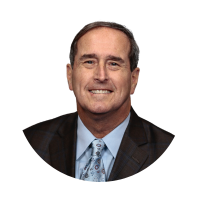
Keith Calligaro, MD |
|

Thomas Forbes, MD |

Peter Henke, MD |
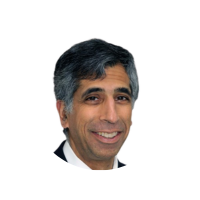
Anil Hingorani, MD |
|

Geetha Jeyabalan, MD |
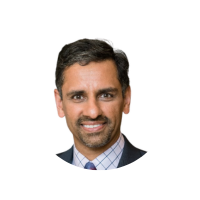
Vikram Kashyap, MD |
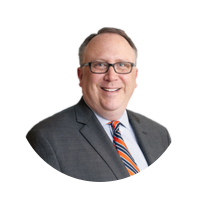
Matthew Eagleton, MD |
|
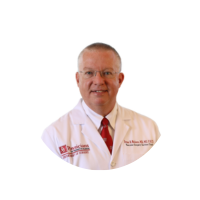
Peter Nelson, MD |

Matthew Menard, MD |

Palma Shaw, MD |
|

Edith Tzeng, MD |
Joseph Mills, MD
Joseph Mills, MD, is the Reid professor and chief of vascular surgery and endovascular therapy at Baylor College of Medicine in Houston, Texas. He has served as president of the Peripheral Vascular Surgery Society, the Western Vascular Society and the Association of Program Directors in Vascular Surgery. He was the director of the American Board of Surgery (ABS), past chair of the Vascular Surgery Board of the ABS and a 7-year member of the Surgery Residency Review Committee of the ACGME. He was co-editor of "Rutherford's" textbook (7th -9th editions), served on the JVS editorial board and was the associate editor (Peripheral Arteries) of the European Journal of Vascular and Endovascular Surgery from 2020 to 2023. He is the current president of the SVS. He is the immediate past-president of the SVS.
Bernadette Aulivola, MD
Bernadette Aulivola, MD, is a vascular surgeon, professor and director of the Division of Vascular Surgery and Endovascular Therapy at Loyola University Medical Center in Maywood, Ill. She has made significant contributions to the field, particularly in venous disease and aortic aneurysms, and her research endeavors have resulted in numerous publications in medical journals.
Keith Calligaro, MD
Keith Calligaro, MD, is the chief of vascular surgery at Pennsylvania Hospital in Philadelphia, Pa. He received his medical degree from Rutgers Robert Wood Johnson Medical School and has practiced for over 20 years. He has held the position of president in organizations such as the Eastern Vascular Society and the Society for Clinical Vascular Surgery. He is the current president-elect of the SVS.
Thomas Forbes, MD
Thomas Forbes, MD, is the surgeon-in-chief and James Wallace McCutcheon chair of the Sprott Department of Surgery at the University Health Network, and professor and vice-chair (Finance and Advancement) of the Department of Surgery, Temerty Faculty of Medicine, at the University of Toronto. He is also the editor-in-chief of the Journal of Vascular Surgery and a section editor of "Rutherford's Vascular Surgery and Endovascular Therapy" textbook.
Peter Henke, MD
Peter K. Henke, MD, is the Leland Ira Doan Professor of Surgery at the University of Michigan and the Veteran’s Administration Hospital. He completed his general surgery residency at the University of Louisville, where he was honored with the Chairman’s Award for Personal Scholarship and the C. M. Edelen Award for best resident paper of the year in 1997. He is the past chief of surgery at the Ann Arbor Veterans Affairs, co-director of the Blue Cross Blue Shield of Michigan Vascular Intervention Collaboration and the past President of the American Venous Forum.
Anil Hingorani, MD
Anil Hingorani, MD, is a board-certified vascular surgeon based in Brooklyn, N.Y., affiliated with New York University. Dr. Hingorani is skilled in identifying and treating various vascular conditions, including vascular access, varicose veins, lower limb arterial disease, carotid artery angioplasty and stent, aortic artery aneurysm and vein disorders.
Geetha Jeyabalan, MD
Geetha Jeyabalan, MD, is a fellowship-trained vascular surgeon with MedStar Heart and Vascular Institute and leads the MedStar Health Vein Centers in Annapolis, Md. She is familiar with treating carotid disease, abdominal aortic aneurysms, limb preservation for peripheral arterial disease, dialysis access and venous disease.
Vikram Kashyap, MD
Vikram Kashyap, MD, is a vascular surgeon and the Frederik Meijer chair of the Meijer Heart and Vascular Institute, as well as the vice president for Cardiovascular Health at Corewell Health in Grand Rapids, Mich. Kashyap, has co-authored over 200 articles and book chapters, focusing on research areas such as atherosclerosis, thrombosis and cerebrovascular disease.
Matthew Eagleton, MD
Matthew Eagleton, MD, is a vascular surgeon at Massachusetts General Hospital in Boston, Mass. He is the chief of the Division of Vascular and Endovascular Surgery, holds the Linton chair in vascular surgery at Harvard Medical School in Boston, Mass. and is the co-director of the Fireman Vascular Center. He currently serves as the program chair of the SVS Vascular Annual Meeting. He is the current president of the SVS.
Peter Nelson, MD
Peter Nelson, MD, is a professor of surgery, the Mary Louise Todd chair in cardiovascular research, section chief of vascular surgery and vice chair for research in the Department of Surgery at the University of Oklahoma College of Medicine in Oklahoma City, Okla.
Matthew Menard, MD
Matthew Menard, MD, is the vascular and endovascular fellowship program director and co-director of the Endovascular Surgery Program at Brigham and Women’s Hospital (BWH). He is a vascular and endovascular surgeon at BWH and an assistant professor of surgery at Harvard Medical School (HMS). He authored over 40 peer-reviewed publications, and his interests include surgery for aortic aneurysms, arterial occlusive disease, cerebrovascular disease, peripheral vascular disease and thoracic outlet syndrome.
Palma Shaw, MD
Palma Shaw, MD, a vascular surgeon and professor of surgery at the State University of New York, is also a member of the division of vascular surgery at Upstate Medical Center in Syracuse, N. Y. She is skilled in aortic surgery, peripheral and venous intervention, diabetic foot management and wound care.
Edith Tzeng, MD
Edith Tzeng, MD, a vascular surgeon, is the University of Pittsburgh Medical Center chair, professor of surgery and chief of vascular surgery at the Veterans Affairs Medical Center in Pittsburgh, Pa. Her research centers on investigating ways to improve the healing of blood vessels after injury or surgery, including the potential of nitric oxide and carbon monoxide for vascular regeneration.